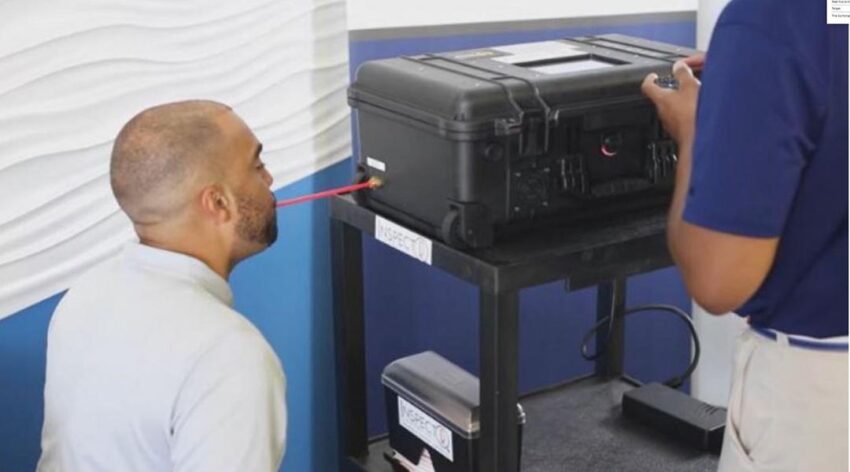Using a chemical signature in the breath, a newly approved COVID-19 breathalyzer could provide an easy and rapid means of testing.
Last week, the US Food and Drug Administration (FDA) announced the emergency approval of a breathalyzer test that can detect components of the SARS-CoV-2 virus in infected individuals. The InspectIR COVID-19 Breathalyzer represents an important milestone in testing technology as it is easily portable and can deliver results in just three minutes.
The device was validated in a cohort of 2,409 individuals with and without symptoms, and was found to have a 91% positive sensitivity, meaning it correctly identified 91% of positive cases confirmed by PCR test. The study also showed that, in a population with only 4.2% of individuals who are positive for the virus, the test had a negative predictive value of 99.6%, meaning that people who receive a negative test result are likely truly negative in areas of low disease prevalence.
This sensitivity means that a positive result will still require confirmation with a PCR test, however, it could come in handy as an added layer of protection at large events, hospitals, doctors offices, or airports.
Unlike current gold standard testing methods, such as rapid antigen tests and PCR, the InspectIR COVID-19 Breathalyzer uses a technology called GC-MS or gas chromatography-mass spectrometry. This is a conventional technique used in research labs in which the chemical components of a mixture are vaporized and carried through a column by an inert gas. As they interact with the column, they get separated based on their physical and chemical properties, and are fed into a mass spectrometer where their individual masses can be determined and used to identify them.
The current test identifies five volatile organic compounds associated with the SARS-CoV-2 virus in exhaled breath. This “breath fingerprint” occurs as a result of the change in physiology during infection, although the InspectIR team did not disclose which compounds specifically were being detected.
In the FDA’s press release, they disclosed that InspectIR expects to be able to produce approximately 100 instruments per week, which can each be used to evaluate approximately 160 samples per day. “At this level of production, testing capacity using the InspectIR COVID-19 Breathalyzer is expected to increase by approximately 64,000 samples per month,” they wrote.
When this capacity will be reached is not yet clear, and some experts are still skeptical as to whether the device will translate successfully to real-world settings; the fact that a trained operator is required is a point of concern as this might limit the device’s reach.
But the InspectIR COVID-19 Breathalyzer is not the first COVID-19 breath test to have found regulatory approval. The concept of detecting disease or infection through the breath is not new, with a growing body of research dedicated to identifying diseases ranging from cancer to tuberculosis.
Since the beginning of the pandemic, the technology has been applied to COVID-19, and similar devices have been approved in other countries, such as the SpiroNose breathalyzer approved for use in the Netherlands in February 2021.
While its success remains to be seen, experts and health authorities hope that through a variety of testing methods, with some being less invasive than others, might broaden the population of people willing or able to get tested in order to track the virus and keep a handle on future outbreaks.
Feature image credit: InspectIR Systems

